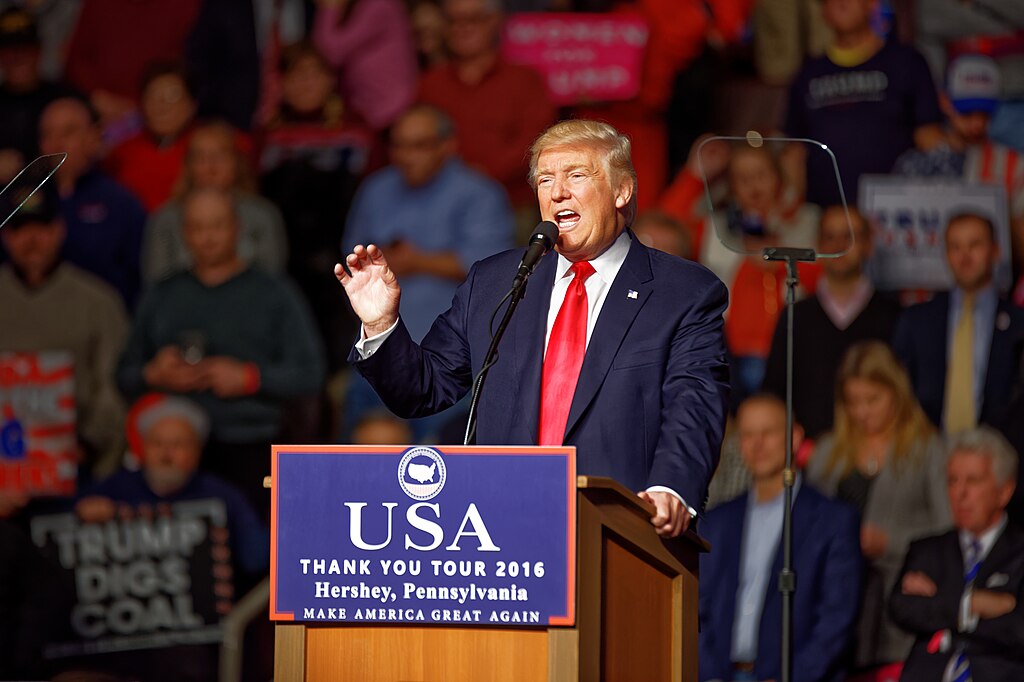Donald Trump’s return to the presidency in 2025 comes with ambitious plans to tackle the ongoing supply chain challenges plaguing the United States. His administration’s proposed measures aim to strengthen domestic manufacturing, streamline logistics, and reduce dependency on foreign imports. While supporters hail these initiatives as transformative, critics remain skeptical about their feasibility and potential side effects.
Revamping Domestic Manufacturing: Trump’s Core Strategy
Central to Trump’s supply chain strategy is a renewed focus on boosting domestic manufacturing. By offering tax incentives and grants, the administration aims to encourage companies to produce critical goods, such as semiconductors and pharmaceuticals, within U.S. borders. Trump has also pledged to create new industrial hubs in regions hit hardest by deindustrialization, promising to “bring back American jobs.”
Additionally, the administration plans to impose stricter regulations on imported goods from countries like China. This policy is intended to reduce reliance on foreign markets for essential products and protect national security. However, some experts caution that these measures could lead to increased costs for consumers and strain trade relationships with key partners.
Addressing Logistics Bottlenecks and Workforce Shortages
To alleviate shipping delays and clogged ports, Trump’s plan includes significant investments in infrastructure and technology. Proposals include modernizing key ports with advanced automation systems and upgrading outdated railways to improve the flow of goods across the country.
Moreover, the administration has highlighted the importance of addressing workforce shortages in the logistics sector. Trump has called for increased training programs and streamlined pathways for commercial driver’s license (CDL) applications to encourage more individuals to join the trucking industry. These initiatives aim to fill gaps caused by retirements and pandemic-era disruptions.
While these steps have been welcomed by industry leaders, labor unions are raising concerns about automation’s potential to displace workers. Striking a balance between technological advancement and job security will likely be a contentious issue as the plan unfolds.
Netizens React to Trump’s Supply Chain Vision
Reactions on social media to Trump’s supply chain initiatives have been divided, with both praise and criticism flooding platforms like Twitter:
- @SupplyChainGuru: “Finally, a real plan to prioritize American manufacturing! This could revolutionize how goods are made and shipped.”
- @TradeWatchdog: “Reducing imports might sound great, but at what cost? Consumers will pay the price.”
- @LogisticsPro2025: “If Trump can modernize ports, it’ll be a game-changer. Long overdue for this kind of investment.”
- @UnionVoicesNow: “Automation sounds like job cuts to me. Who’s protecting the workers here?”
- @MadeInUSA2025: “This is exactly what America needs. Trump is putting our country first again.”
- @EcoAnalyst: “Domestic focus is good, but ignoring global collaboration could backfire. Let’s hope for some middle ground.”



 Korea Zinc Plans $6.78 Billion U.S. Smelter Investment With Government Partnership
Korea Zinc Plans $6.78 Billion U.S. Smelter Investment With Government Partnership  Thailand Vows Continued Military Action Amid Cambodia Border Clash Despite Trump Ceasefire Claim
Thailand Vows Continued Military Action Amid Cambodia Border Clash Despite Trump Ceasefire Claim  U.S. Offers NATO-Style Security Guarantees to Ukraine as Peace Talks Show Progress
U.S. Offers NATO-Style Security Guarantees to Ukraine as Peace Talks Show Progress  Jimmy Lai Convicted Under Hong Kong National Security Law in Landmark Case
Jimmy Lai Convicted Under Hong Kong National Security Law in Landmark Case  Sydney Bondi Beach Shooting Sparks Calls for Stronger Protection of Jewish Community in Australia
Sydney Bondi Beach Shooting Sparks Calls for Stronger Protection of Jewish Community in Australia  Syria Arrests Five Suspects After Deadly Attack on U.S. and Syrian Troops in Palmyra
Syria Arrests Five Suspects After Deadly Attack on U.S. and Syrian Troops in Palmyra  Trump Sues BBC for Defamation Over Edited Capitol Riot Speech Clip
Trump Sues BBC for Defamation Over Edited Capitol Riot Speech Clip  Taiwan Political Standoff Deepens as President Lai Urges Parliament to Withdraw Disputed Laws
Taiwan Political Standoff Deepens as President Lai Urges Parliament to Withdraw Disputed Laws  International Outcry Grows Over Re-Arrest of Nobel Laureate Narges Mohammadi in Iran
International Outcry Grows Over Re-Arrest of Nobel Laureate Narges Mohammadi in Iran  Lukashenko Says Maduro Welcome in Belarus Amid Rising U.S.-Venezuela Tensions
Lukashenko Says Maduro Welcome in Belarus Amid Rising U.S.-Venezuela Tensions  Supporters Gather Ahead of Verdict in Jimmy Lai’s Landmark Hong Kong National Security Trial
Supporters Gather Ahead of Verdict in Jimmy Lai’s Landmark Hong Kong National Security Trial  U.S. Soldiers Killed in ISIS Attack in Palmyra, Syria During Counterterrorism Mission
U.S. Soldiers Killed in ISIS Attack in Palmyra, Syria During Counterterrorism Mission  Russian Drone Attack Hits Turkish Cargo Ship Carrying Sunflower Oil to Egypt, Ukraine Says
Russian Drone Attack Hits Turkish Cargo Ship Carrying Sunflower Oil to Egypt, Ukraine Says  Ukraine Claims First-Ever Underwater Drone Strike on Russian Missile Submarine
Ukraine Claims First-Ever Underwater Drone Strike on Russian Missile Submarine  Trump’s Rob Reiner Remarks Spark Bipartisan Outrage After Tragic Deaths
Trump’s Rob Reiner Remarks Spark Bipartisan Outrage After Tragic Deaths  European Leaders Launch International Claims Commission to Compensate Ukraine for War Damage
European Leaders Launch International Claims Commission to Compensate Ukraine for War Damage 
































